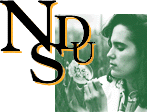 |
|
Hoplistodera Westwood, 1837
Hoplistodera Westwood, 1837: 18.
Type Species: Hoplistodera testacea Westwood, 1837, by monotypy.
Tribal Placement: Hoplistodera serves as the type genus for the Hoplistoderini.
Included Species:
convexa Dallas
fergussoni Distant
incisa Distant
longispina Hsiao & Cheng
pulchra Yang
recurva Distant
scutellomaculata Distant
testacea Westwood
tonkinensis Distant
validicornis Breddin
virescens Dallas
Comments: Here are a few of my thoughts on identifying Chinese specimens of Hoplistodera (one should remember that I have not examined any type material). Most of my thoughts have been influenced by the illustrations presented in Hsiao et al. (1977). There are currently 6 species recorded from China with another two (scutellomaculata and tonkinensis) reported from Laos and/or Vietnam. I have not seen authentic specimens of incisa or longispina. Apparently, all species of Hoplistodera have the humeral angles produced into an acute or spinose process. Hoplistodera longispina (only recorded from Yunnan) apparently has the humeral angles somewhat more elongate than other species. Hoplistodera incisa has a small tooth posteromesad of the humeral apices. Hoplistodera incisa was originally described from north India, but has been recorded from several Chinese provinces (Guangxi, Guizhou, Hainan, Yunnan). My concern is that specimens of what I believe are Hoplistodera fergussoni often have at least a small bump or protuberance in the same area. It may be possible that Chinese specimens of H. incisa may actually belong to H. fergussoni. Hsiao et al. (1977), or anyone since, has illustrated the genitalia of H. incisa.
I have examined at least four different species of Hoplistodera from China. Typically, the male genitalia has the posterior margin of the pygophore somewhat transverse with a small medial emargination. In H. fergussoni and H. pulchra, this margin is swollen on either side of the medial emargination, and gives this margin a distinct sinuous pattern. Hoplistodera fergussoni has the posteroventral surface of the pygophore more strongly produced than H. pulchra (easily seen in lateral view - see figures in Hsiao et al., 1977), and this protuberance is more sharply edged than in H. pulchra. There are also two species that do not have the posterior margin of the pygophore swollen on each side of the medial emargination. I have one male and one female specimen identified as H. virescens (sent to me by Dr. L-y. Zheng). This male has the posterior pygophoral margin slightly sinuous, and slightly protruding on each side of the medial emargination. Also the protuberance on posteroventral surface of the pygophore is not produced posteriorly as much as in the other species. Also, in the female, the 9th paratergites are quite small. As of right now, I have considered the other species to be an undescribed species, but again, I have not examined type material, and I have not seen specimens of several species reported from southern China or southeast Asia. It should also be noted that H. virescens was also originally described from northern India, and so may not actually occur in China.
I also have four specimens of Hoplistodera convexa from the Philippines. They are quite distinct from the above species - the humeral angles are somewhat more elongate and rounded (or rod-like, cylindrical?), and the posterolateral angles of the pygophore projecting distinctly posteriorly. I also have two specimens from New Guinea (there are no species currently recorded from New Guinea). The posterior margin of the pygophore is very sinous, and quite swollen on either side of the medial emargination.
Other Links:
David A. Rider
Professor of Entomology
North Dakota State University
E-Mail:
David.Rider@ndsu.edu
updated: 22 Apr 2009
Published by the
Department of
Entomology
Prospective students may schedule a visit by calling 1-800-488-NDSU.